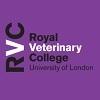Explore all the information on
Dairy cattle lameness
Welcome to the page about Dairy cattle lameness of Engormix; a source of knowledge on Dairy cattle lameness.
Nowadays that pandemic is of actuality some epidemiology lessons can be extracted to understand lameness prevention. To address lameness prevention in an academic way we must follow the basis of preventative medicine stablished by Wirchow based on 3 steps: There are 3 level of prevention: 1 Avoid disease appearance 2 Minimize clinical expression 3 Treat clinical cases to minimize severity Level 1 Starts since the decision of...
Comments : 3
Recommendations: 3
Introduction An area of nutrition that is commonly overlooked in foot health managment is the role trace minerals play in improving claw health, structural integrity and reducing incidence of lameness. Trace minerals are important to production and maintenance of healthy keratinized tissues (Mulling et al., 1999). Increasing the bioavailability of trace minerals improves their utilization and thus may help improve claw horn...
Comments : 9
Recommendations: 0
INTRODUCTION Lameness is one of the most important welfare, health, and productivity problems in intensive dairy farming worldwide. Furthermore, it causes pain (Whay et al., 1998; Rushen et al., 2007), reduces longevity (Booth et al., 2004; Canadian Dairy Information Centre, 2014), milk production (Warnick et al., 2001; Green et al., 2002), and reproductive performance (Hernandez et al., 2001; Garbarino et al., 2004), and consequently has a great economic effect (Ettema and...
Comments : 4
Recommendations: 3
Introduction Bovine lameness is an important condition in commercial dairy and beef operations worldwide. Its economic impacts include decreased reproductive performance and milk yield and increased culling rates, milk losses and labor. One relatively new finding in the field of lameness is the non-healing lesions (NHL) such as toe necrosis (Blowey, 1999; Tozzo, 2000) and wall ulcers (Holzhauer, 2008; Cook and Burgi, 2008). These lesions typically are unresponsive or poorly...
Comments : 1
Recommendations: 1
Introduction • Questions have risen on impact of many hoofbath chemicals on human health and the environment, and also concerns about water usage. • Topical spray disinfectant solutions are an interesting alternative to hoofbaths because they address those concerns. • While 1 L/cow disinfecting solution is standard recommendation in a hoofbath treatment, only 50 mL/cow would be required if spraying. • This study evaluated the preventive...
Comments : 1
Recommendations: 1
Misconceptions Animals have to suffer on large confined operations. Abuse is rampant. Large herds only can exist through widespread use of antibiotics and hormones. Large farms pollute rivers. Meat and milk are laden with drug and hormone residues. Large operations exploit animals...
Comments : 0
Recommendations: 0
1. Introduction Lameness is one of the most significant diseases currently impacting on dairy cow health, welfare and productivity (Huxley, 2013). Since a first occurrence of lameness increases the future risk of lameness (Hirst et al., 2002; Green et al., 2014; Randall et al., 2015), lameness in dairy heifers has the potential to have a severe impact on their overall lifetime performance within the herd. The...
Comments : 0
Recommendations: 4
INTRODUCTION Adequate rest has been positively associated with productivity, health, and welfare of dairy cattle. When access to stalls is restricted, cows prioritize lying down over feeding (Munksgaard et al., 2005), and preventing cows from lying down induces stress (Cooper et al., 2008). As a consequence, measures of lying behavior, such as the daily duration and the frequency and duration of lying bouts, is a measure of cow comfort (Haley et al., 2001; Rushen et al.,...
Comments : 0
Recommendations: 0


Boosting Dairy Cow Performance: The Story Behind a Natural Nutritional Solution
Suggested link
Background Together with mastitis and poor fertility, lameness in cattle is one of three major factors influencing profitability and economic losses in modern dairy farming [1, 2]. In contrast to infertility and sub-clinical mastitis, lameness has a distinct negative effect on animal behaviour and welfare [3–5]. Lameness in dairy cows is a worldwide problem with herd prevalence estimates ranging from 8 % in New...
Comments : 0
Recommendations: 1
1. Introduction It has long been recognized that being able to accurately assess conformational traits could be of significant benefit when determining selection policies and gauging the impact of factors, such as the environment and nutrition, on the hoof and on the risk of lameness [1]. Claw horn quality has been defined as the “ product of horn characteristics, claw shape and the anatomy and physiology of inner structure ” [2]. There is, thus, a need to...
Comments : 0
Recommendations: 1
INTRODUCTION Lameness is a severe welfare problem in cattle and has a detrimental effect on longevity (Cramer et al., 2009a), productivity (Green et al., 2002), and reproductive performance (Barkema et al., 1994; Garbarino et al., 2004). Consequently, it is among disorders causing the largest economic losses in the dairy industry (Ettema and Ostergaard, 2006). Approximately 90% of the causes of lameness involve foot...
Comments : 0
Recommendations: 0
Dr. Andres Ardila (University of Queensland) presented a research on the emergence of this disease in order to implement appropriate prevention and control measures, during the International Conference Lameness in Ruminants 2015 in Valdivia, Chile....
Comments : 1
Recommendations: 2
Dr. Miia Kontturi (University of Helsinki) discussed the research of outbreaks of interdigital phlegmon, as well as the existence of interdigital dermatitis and digital dermatitis in farms, during the International Conference Lameness in Ruminants 2015 in Valdivia, Chile....
Comments : 2
Recommendations: 2
Introduction
The incidence of lameness is so high in many dairy herds that treatment of all lame cows is not feasible (Horseman et al., 2013). Because soft barn flooring may alleviate the problem of claw horn lesions, we conducted a study to measure the ground reaction forces and pressure distribution in claws on 4 different surfaces.
Materials and Methods
Using a force plate and a pressure plate...
Comments : 1
Recommendations: 2


Boosting Dairy Cow Performance: The Story Behind a Natural Nutritional Solution
Suggested link
Dr. Karl Nuss (University of Zurich) talked about the impact of different types of flooring on claw health, during the International Conference Lameness in Ruminants 2015 in Valdivia, Chile....
Comments : 4
Recommendations: 5
Dr. Jon Huxley (University of Nottingham) talked about claw horn lesions, causes, and findings in recent researches, during the International Conference Lameness in Ruminants 2015 in Valdivia, Chile....
Comments : 1
Recommendations: 0
Background Over the past decade, there has been a huge increase in the use of remote monitoring devices such as global positioning (GPS) trackers, location sensors, proximity loggers and accelerometers for automated recording of both human and animal behaviour [1–16]. By necessity, this has led to the need for more efficient and accurate methods of analysing the vast amounts...
Comments : 0
Recommendations: 1
Introduction Lameness is one of the most important welfare issues of high-producing dairy cows in North America [1]. The latter has been attributed to management and environmental factors [2] as well as physiologic adaptations such as postpartal negative energy balance, which can lead cows to excessive loss of body condition (BCS) [3]. Postpartal negative energy balance can be exacerbated by prepartal high-energy diets,...
Comments : 1
Recommendations: 0
Roger Blowey presents at Engormix his book entitled "Cattle Lameness and Hoofcare"...
Comments : 0
Recommendations: 0
Roger Blowey speaks about his presentation in 18th International Symposium and 10th International Conference on Lameness in Ruminants...
Comments : 0
Recommendations: 0






.jpg&w=3840&q=75)










.mp4&w=3840&q=75)







